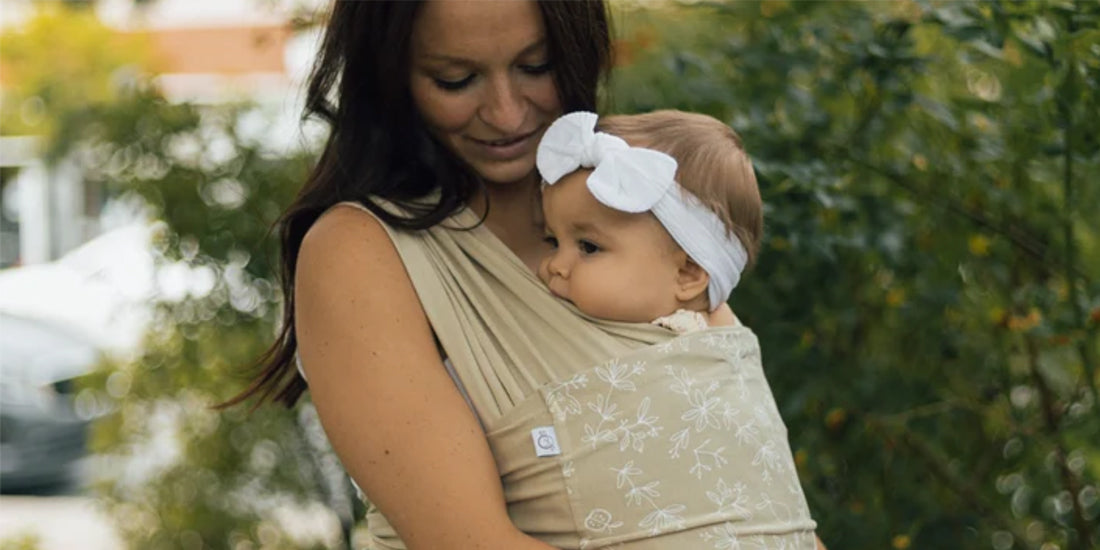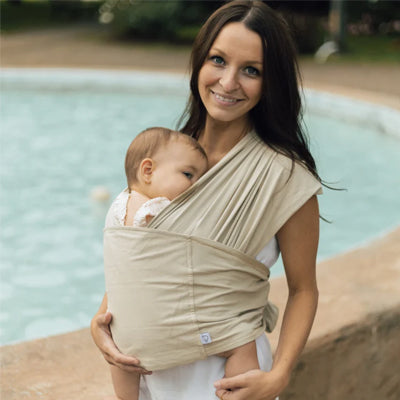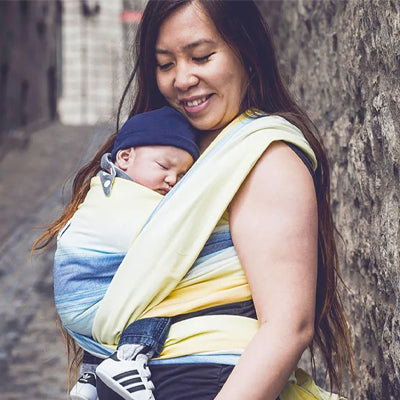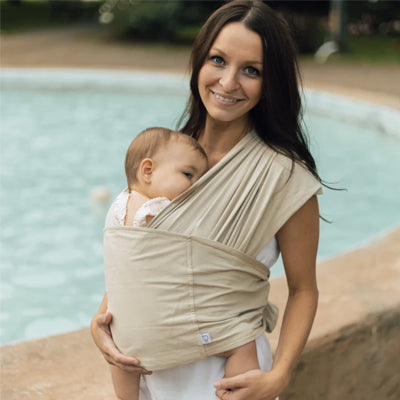 Carrying your baby is an intimate experience that allows you to build a deep bond with your child, while enjoying unique freedom of movement. However, the safety and comfort of the baby and its carrier during carrying depend on a certain number of criteria, including the choice of suitable materials for the baby carrier or the baby sling.
Carrying your baby is an intimate experience that allows you to build a deep bond with your child, while enjoying unique freedom of movement. However, the safety and comfort of the baby and its carrier during carrying depend on a certain number of criteria, including the choice of suitable materials for the baby carrier or the baby sling.In this article, we will list the criteria to consider when choosing the right fabric and then we will explain the types of fabrics and materials available on the market. Whether you are a new or experienced parent, understanding the differences between materials will help you make an informed decision and fully enjoy the fun of babywearing.
What criteria should I consider in my choice?
Before exploring the different fabric options for baby carriers and slings, it is crucial to understand the criteria to consider to make the right choice.
- Fabric Care and Durability:
The durability of the fabric is essential, as it must be able to resist tearing and over-stretching to ensure the safety of both the baby and the wearer. Sturdy fabric will also ensure long-term use of the baby carrier or sling. Additionally, ease of care is an important factor, as a fabric that can be easily washed and dried makes life easier for busy parents.
- Baby needs and characteristics:
While certain fabrics are more rigid and allow the baby to be held tightly against you, others offer the child better freedom of movement. Some children like to be able to move around while others are more reassured when they are snuggled up against their parent. And this is the same for the carrier: some parents are more reassured to know the baby is stable and well supported in the baby carrier or sling. And you, what do you prefer?
Regarding comfort, some fabrics are softer than others. Once again here, it will depend on the baby's needs since some babies have skin sensitivities so it will be necessary to favor the use of non-irritable fabrics. In addition, if you do skin to skin with him, it will also be more pleasant for you and for the baby to have a fabric that resembles the softness of the skin.
Finally, a final criterion to take into account is the baby’s age and weight. Some materials will be more rigid and solid. They will then allow you to transport a heavier baby.
- Activities carried out with the baby carrier or sling:
Finally, a last criterion to take into account is the reason why you want to use the baby carrier or the baby sling. You can carry your baby for all kinds of activities: for hiking, to have your hands free during household activities, for breastfeeding, for getting around town, etc. Certain materials will be more rigid and will therefore be preferred if you are more active since they will hold the child well in place. Others will be preferable for gentle moments like breastfeeding, letting baby move to feed.
Seasonality must also be considered since in summer, we look for fabrics that breathe and therefore provide a little freshness to the wearer and the child. Conversely, in winter, the baby must be well protected from the cold and it is therefore better to favor thick, even waterproof, fabrics.
What fabric(s) should I choose for my baby carrier and my sling?
Many materials are used to create the fabrics used in baby carriers and slings. Here we will cover a few but we will not be able to cover everything due to the wide variety of choices that exist on the market. We encourage you to find out about the material properties of the baby carrier or sling you choose. Please note that weaving methods have evolved a lot and that sometimes the same baby carrier or the same wrap can be made of several materials.
1. Fabrics made from natural materials:
- Cotton, a soft, fresh and hypoallergenic material:
Cotton is a material that is commonly used for baby slings and baby carriers because of its many advantages. This is why several Chimparoo slings such as the traditional baby wrap, the Snüg sling and the Bambino baby carrier use it. Chimparoo created these models in 100% organic woven cotton certified Oeko-Tex 100 (a certification which indicates that tests have been carried out to check whether the textile contains harmful substances).
In addition to molding baby's body well, cotton offers freshness, comfort and softness. It is a material that absorbs moisture from sweat and insulates well from the cold. In addition, cotton is hypoallergenic, which is a great asset for babies' sensitive skin. Cotton fabrics are durable, they are easy to wash, and stains are easier to clean. In addition to being a natural fiber, cotton is biodegradable.
- Linen, a naturally breathable and dirt-resistant fiber:
Linen keeps you cool, while being pleasant when it's relatively cool. Compared to cotton, linen is more resistant to dirt and is slightly bactericidal. It is very durable. However, linen is stiff to the touch at first and requires regular wear to make it soft. Due to its robustness, the Chimparoo adjustable linen ring sling wrap can be used without any weight limit.
- Mint compound fiber fabric, an innovative and antimicrobial material:
Looking for an innovative sling and, above all, one that contributes to baby's good health?
Discover the Snüg mint wrap, a new product from Chimparoo made of organic cotton and fibers composed of mint and active plant molecules. In addition to being very soft, the fabric has natural antimicrobial properties, protects against humidity and feels fresh on the skin. To discover this product, click here.
2. Synthetic materials:
If natural fabrics, such as cotton and linen, are breathable and soft on the baby's skin, synthetic fabrics have many advantages because they allow innovation and offer freshness, durability and good water resistance. For example, the EvöAir bblüv baby carrier used Microtec technology to better regulate the temperature in the baby carrier. Let's also mention the Muti 2.0 baby carrier which is made of resistant, breathable and antimicrobial technological materials. It is thus possible to transport toddlers up to early childhood.
****************
By taking into account criteria such as durability, maintenance, baby's needs and yours, planned activities and seasonality, you will make an informed decision to choose a baby carrier or sling made of materials that are right for you. By exploring the different fabric options available on the market, such as mint fabric with its natural antimicrobial properties, cotton, innovative synthetic materials, we are sure that you will share an unforgettable moment with your little one!
For other tips on babywearing, consult our various resources:
- Chimparoo's YouTube channel is full of demonstrations of carrying positions and discussions surrounding baby development.
- Read our other blog articles on the advantages of carrying, carrying safety or even physiological carrying.
- Also visit our frequently asked questions which addresses questions commonly asked by our customers.








Share:
5 Tips to Live through a Gentle 4th Trimester
5 Tips to Get Used to Babywearing (And Enjoy It to the Fullest!)